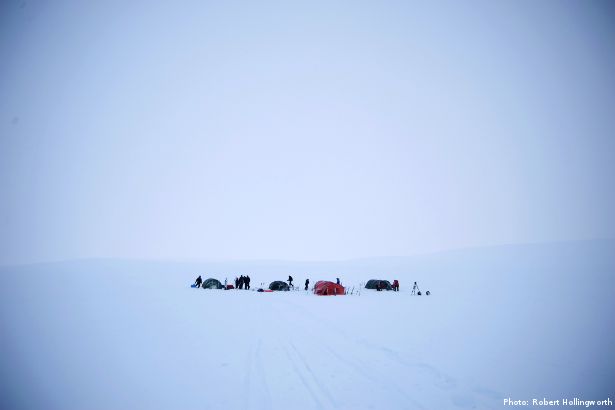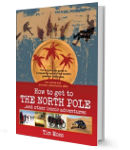
Polar expeditions almost have a language of their own. Below are a few key terms that will help put Arctic travel in context:
[divide]
[box type=”note” bg=”#ebebeb” color=”#111″ font=”arial” fontsize=”13″ border=”#a6a6a6″ head=”How To Get To The North Pole” headbg=”#21417b” headcolor=”#fff”]
This is an edited excerpt from the How To Get To The North Pole chapter of my new book: How To Get To The North Pole And Other Iconic Adventures.
[button color=”green” link=”http://thenextchallenge.org/books” size=”big” font=”arial” fontw=”bold” textcolor=”#fff” texthcolor=”#d00000″ align=”center” radius=”8″]Order Now[/button]
[/box]
[divide]
Pulk – The sled full of equipment and supplies that you drag behind you
Last Degree – The distance between the 89th degree of latitude and the 90th where the Geographic North Pole is located.
Full distance – Expeditions that start from land and finish at the Geographic North Pole.
Barneo – A temporary Russian base that is set up every year on the sea ice about 60 nautical miles from the Geographic North Pole. It has an ice runway and helicopters at its disposal and is thus used as a stepping stone for many expeditions. Sometimes spelled ‘Borneo’.
Cape Arktichevsky, Ward Hunt Island and Cape Discovery – Location on the coast of Russia and Canada commonly used as start points for full distance expeditions.
Sea ice – The frozen ocean which you will be walking on for the majority of your trip.
Leads – The stretches of open water that appear amidst sea ice on the Arctic Ocean.
Pressure ridges – Large blocks of ice that rise up from the pressure of the moving sea ice.
Nautical miles – The standard measurement for travel at sea is also used in the polar world. It is equal to 1.15 miles.
Unsupported – An expedition can be called this if it works under its own steam (e.g. walking or skiing) and does not use any aids like dogs, kites for wind support or motors.
Unassisted – An expedition can be called this if it is entirely self-sufficient and does not use external help such as having a plane drop off supplies. The term ‘without re-supply’ is often used too.
[divide]
How to Get to the North Pole:
and Other Iconic Adventures
Newly published for April 2012
[button color=”green” link=”http://www.thenextchallenge.org/books/” size=”big” target=”_blank” font=”arial” fontw=”bold” textcolor=”#fff” align=”center” radius=”10″]Order Now[/button]


What do you think? Please do add your thoughts below…